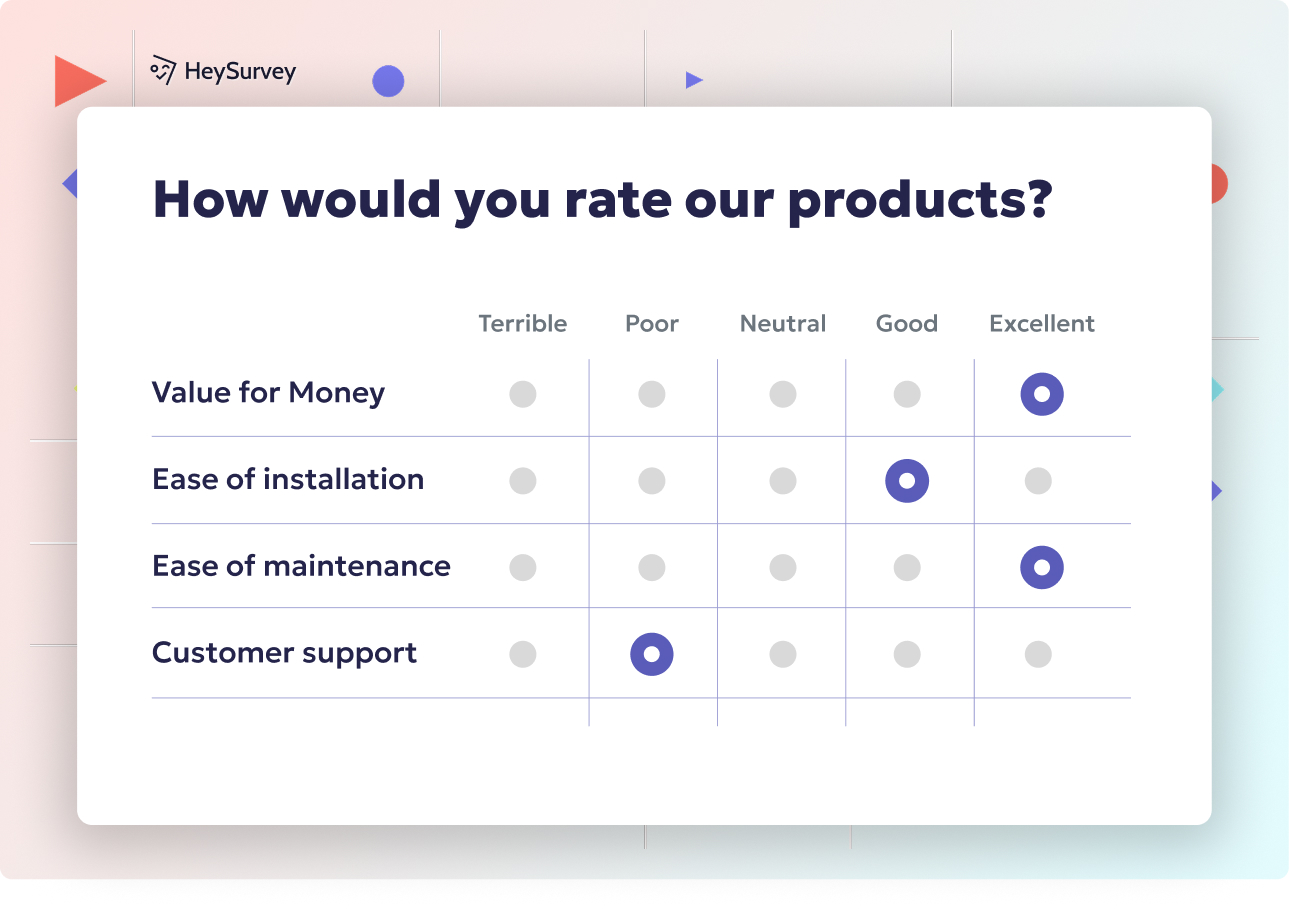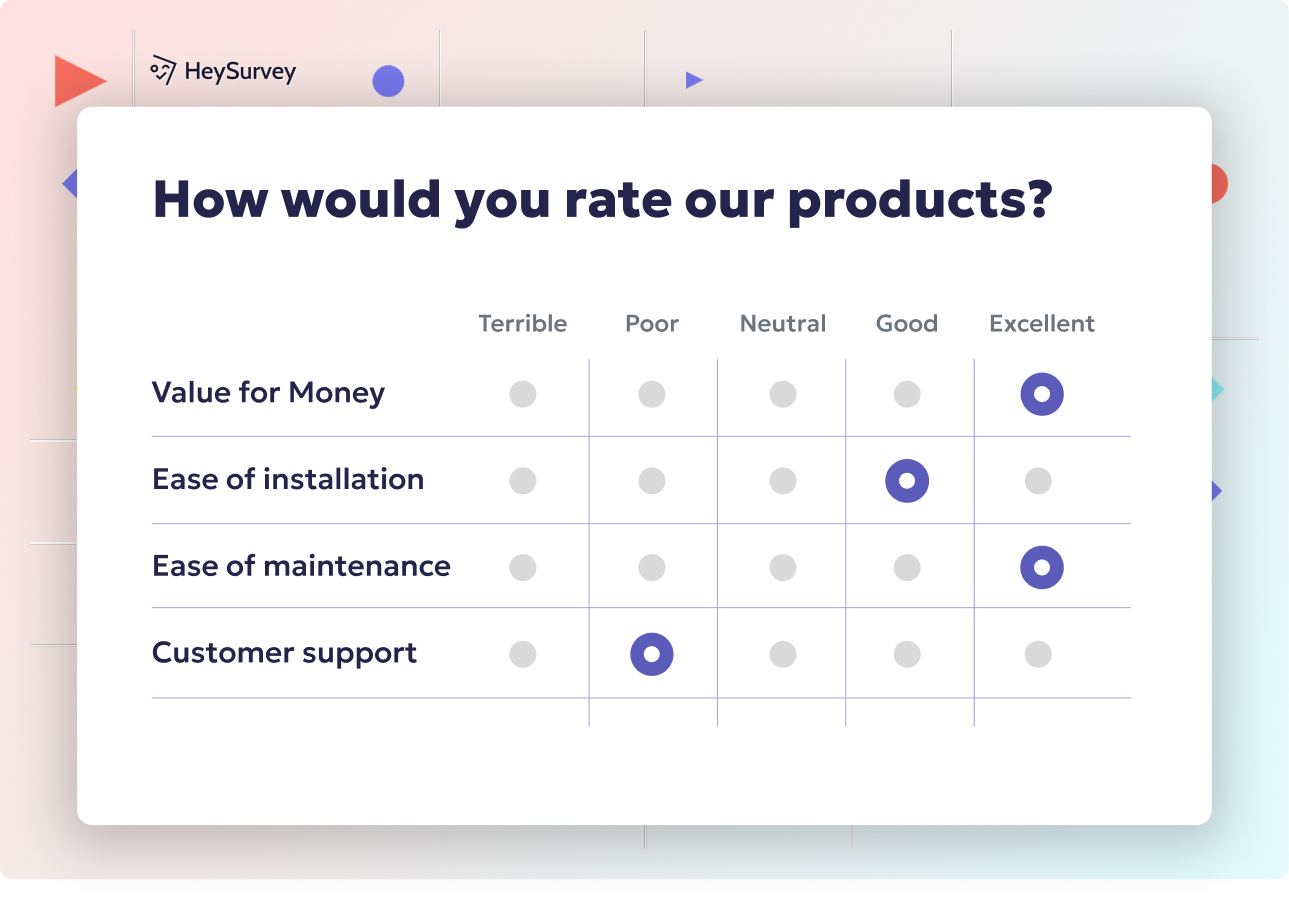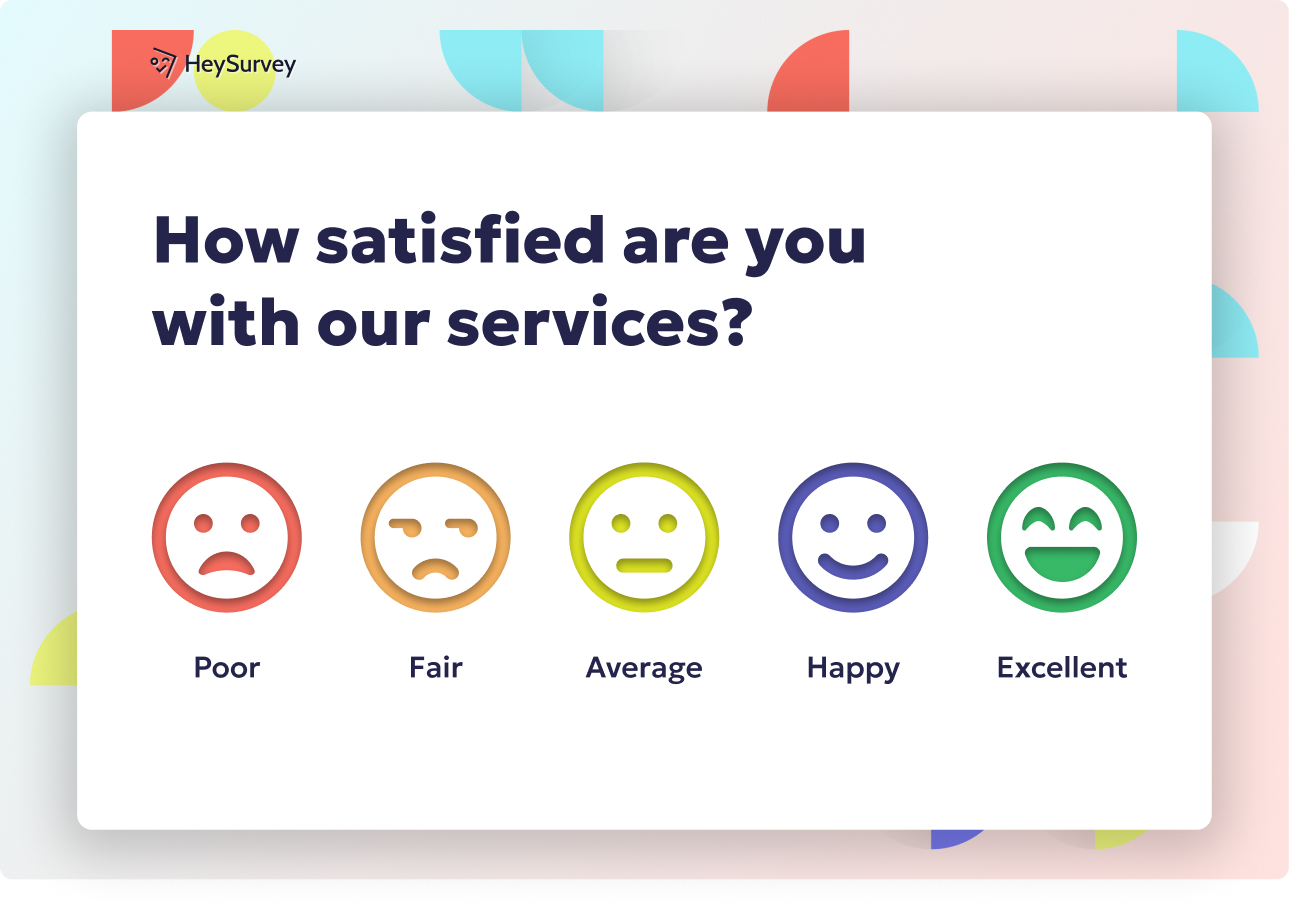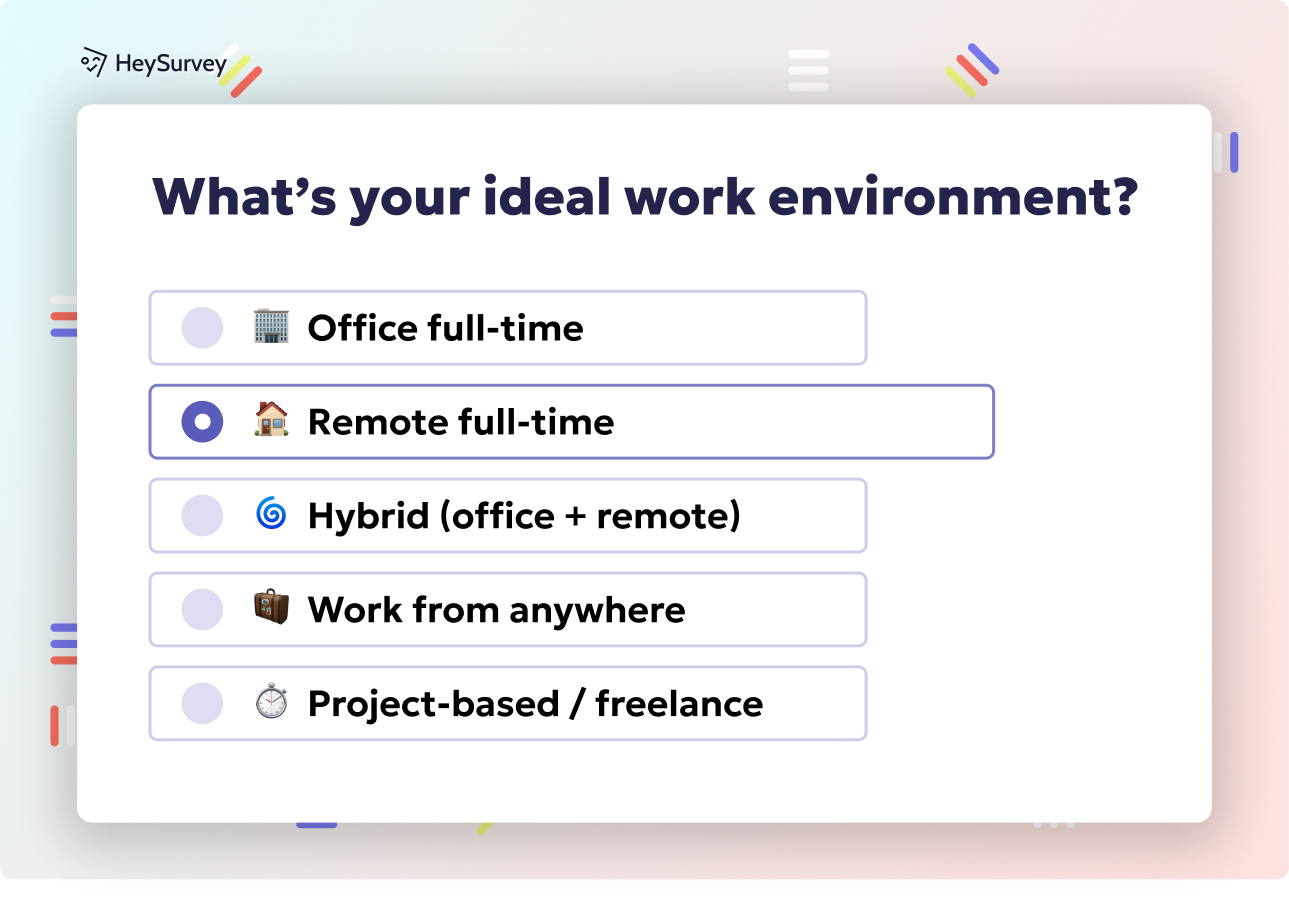31 Community Survey Questions to Boost Local Engagement
Explore 30 community survey questions across six types to gather vital resident feedback and boost local engagement effectively.
Community surveys are a powerful way for organizations of all stripes—think city halls, grassroots groups, homeowners’ associations, and non-profits—to tap into community feedback and shape better neighborhoods. Whether you're facing a new policy decision, vying for a grant, or gearing up for strategic planning, understanding resident opinion is pure gold. Ready to boost local engagement and get actionable info? Dive into the six high-impact neighborhood surveys below, complete with use-cases, clear benefits, and plug-and-play question sets that make your next outreach a walk in the park.
Community Satisfaction Survey
Overview
A community satisfaction survey checks the pulse of local happiness and well-being. It’s the classic “how’s our service?” for entire neighborhoods. By running a resident satisfaction poll, organizations can uncover what makes living in an area joyful—or what’s secretly driving everyone up the wall. These surveys explore topics like amenities, public services, and the general vibe of the community.
People crave validation that their experiences matter, and this type of survey does just that. The results show local leaders exactly where things shine and where they might need a little elbow grease. Plus, satisfaction data offers communities a handy reference when comparing with peer towns or touting what sets them apart.
The real magic comes from the stories respondents tell through their answers. These insights create a live snapshot of community life, highlighting both successes and pain points. Want to know which dog parks are a hit or if taxes feel fair? The satisfaction survey exposes it all—no guesswork needed.
Why & When to Use
Use a community satisfaction survey as an annual report card or after rolling out big changes. It works especially well when:
- You’re benchmarking performance against neighboring cities.
- Measuring resident sentiment after launching new parks or transit routes.
- Checking perceptions following a major community project or event.
Local governments and organizations also love using these surveys for comparative analytics. They give clear, year-over-year data that helps track progress or identify worrying trends. Resident satisfaction polls often become a cherished tradition, providing dependable info with every tick of the calendar.
Post-initiative? Satisfaction surveys capture real-time reactions before memories fade. If you want to hear whether your street mural sparked joy or whether the new recycling plan stuck, run a quick poll. Feedback serves both as a cheer and a gentle nudge toward improvement.
5 Sample Questions
How satisfied are you with the overall quality of life in our community?
Rate your satisfaction with parks and recreational facilities.
How likely are you to recommend this community to friends or family?
How fair do you believe local taxes and fees are for the services received?
Which three words best describe living here?
Community satisfaction surveys reveal that residents highly value safety, quality of life, and public services, with specific priorities varying by locality. (cspd.coloradosprings.gov, cabarruscounty.us, naperville.il.us)

Here’s how to create your community survey with HeySurvey in just a few easy steps:
Step 1: Create a New Survey
Start by heading to HeySurvey and clicking Create New Survey. You can either:
- Choose a relevant template to get a ready-made structure, or
- Start from an empty sheet if you want full control.
Give your survey a clear internal name so you can find it later. Don’t worry—you can always change it in the editor.
Step 2: Add Questions
Now it’s time to build your survey by adding questions:
- Click the Add Question button at the top or between existing questions.
- Pick from question types like multiple-choice, scale, text input, and more.
- Enter your question text and, if needed, add descriptions or images for clarity.
- Mark questions as required to ensure essential info is collected.
If you want, duplicate similar questions to save time. You can also use branching (conditional paths) for a personalized experience.
Step 3: Publish Survey
Once your questions are in place, click Preview to see how it looks on desktop and mobile devices. Make any tweaks you want.
When you’re happy, hit the Publish button. You’ll get a shareable link to distribute your survey. Note: publishing requires creating an account so you can access your results.
Bonus Step 1: Apply Branding
Customize your survey with your logo and brand colors to make it truly yours. Open the Designer Sidebar to tweak:
- Colors, fonts, and backgrounds
- Question card styles and layouts
- Add animations for a touch of flair
This lets your survey stand out as professional and trustworthy.
Bonus Step 2: Define Settings
Head into the Settings Panel to:
- Set start/end dates for your survey’s availability
- Limit the number of responses if needed
- Add a redirect URL for after people finish
- Enable or disable letting respondents view results
These controls help you manage timing, data flow, and user experience effortlessly.
Bonus Step 3: Use Branching for Smarter Surveys
Add branching logic to guide respondents to relevant questions based on their answers. This keeps surveys concise and engaging. For example, if someone says “No” to voting, you can skip follow-up questions about their voting experience.
Ready to create your survey now? Click the button below to open a customized template and start gathering powerful community insights with HeySurvey!
Community Needs Assessment Survey
Overview
The community needs assessment survey digs deep to assess community needs and spot what’s missing from local life. Think of it as a friendly neighborhood audit—it goes beyond surface-level feedback to uncover what residents genuinely crave. By asking clear, pointed questions, this survey type uncovers gaps in existing services, highlights challenges, and clarifies priorities.
Collecting insights about unmet needs helps organizations make smarter decisions. Maybe the library needs more digital books, or perhaps there’s a bigger call for affordable daycare than anyone realized. The survey captures these signals, turning whispers into actionable plans.
An excellent needs assessment invites everyone to voice their dreams and difficulties. New-to-town parents, retirees, or long-term neighbors all get an equal seat at the planning table. Their diverse perspectives help create better, more inclusive services for all.
Why & When to Use
Organizations roll out a needs assessment when:
- Planning budgets and setting next year’s financial priorities.
- Prepping for big grant applications that demand real community input.
- Wanting to test ideas before launching new projects or services.
The data gathered is gold for grant writers and planners. Decision-makers can cite hard evidence instead of hunches. By spotting trends and surfacing pain points, needs assessments ensure local investments go where they count most.
These surveys also help pulse-check neighborhood changes over time. When repeated, they show which needs persist and which solutions are actually working. A well-timed assessment can help leaders avoid costly missteps and give residents a real voice in shaping their future.
5 Sample Questions
Which public services do you feel need the most improvement?
What barriers prevent you from accessing community programs?
Rank the importance of the following issues: housing, jobs, healthcare, education.
What new services would you like introduced in the next 12 months?
How urgent is the need for affordable childcare in our area?
Engaging community members throughout the assessment process leads to richer data, increased capacity of all partners, and stronger relationships with communities. (hria.org)
Public Safety & Security Survey
Overview
A public safety and security survey—also known as a neighborhood safety questionnaire—asks residents how secure they feel and what worries them most about crime and emergencies. These surveys shine a light on perceptions of safety, trust in local policing, and readiness for disasters. There’s no guesswork—just honest answers from those who live the reality day to day.
It’s easy for decision-makers to assume they know the security landscape, but an actual resident opinion poll may reveal a different story. Maybe streetlights need fixing, or perhaps people want more visible police patrols. This survey lets people voice these realities directly.
Community trust hinges on transparent conversations about safety. Whether you’re addressing property crimes, traffic safety, or how quickly first responders arrive, public safety surveys open the door for direct, open feedback.
Why & When to Use
Public safety and security surveys make sense when:
- Preparing to revise policing and community safety policies.
- Applying for safety-focused grants that require community input.
- Gauging the impact after interventions like neighborhood watch programs or new patrol zones.
You might also use this type of survey after a recent crime wave, natural disaster, or installation of new security features. Clear, honest data from residents can validate what’s working—or shine a light on urgent gaps.
The results build trust. When an HOA or local government listens and acts on security concerns, residents feel heard, safer, and more invested in their neighborhood’s well-being.
5 Sample Questions
How safe do you feel walking alone in your neighborhood after dark?
Have you contacted law enforcement in the past year? Rate the response.
Which crimes concern you the most?
Do you participate in a neighborhood watch program?
How prepared do you feel for natural disasters or emergencies?
Civic Engagement & Participation Survey
Overview
A civic engagement and participation survey tracks how plugged-in residents feel—and how likely they are to actually show up, vote, volunteer, or raise a voice at a town hall. This goes far beyond tracing numbers at the ballot box. As a resident engagement survey, it spotlights the heart and soul of any thriving community: active, passionate people.
These surveys are a goldmine for understanding what pulls community members off the sidelines. Is it better event promotion, or maybe easier voting? They also shed light on what stops busy neighbors from joining in, whether that’s lack of child care, time, or simple awareness.
Inviting input on civic life helps organizations tailor outreach strategies. Engagement data turns educated guesses into proven tactics, keeping enthusiasm alive year-round.
Why & When to Use
Pull out a civic engagement survey when:
- An election is on the horizon, and you want to boost turnout.
- Launching a new community volunteer drive or social campaign.
- Evaluating the effectiveness of recent efforts meant to galvanize resident action.
Engagement surveys can spark new ideas to increase participation. Maybe a shift to digital town halls will turn lurkers into attendees or a new communication channel will resonate better than flyers ever could. Results tell you what works, what doesn’t, and what stands in the way.
Consistently gathering and acting on this feedback makes for a stronger, more inclusive neighborhood where everyone’s voice has a chance to echo.
5 Sample Questions
Did you vote in the last local election? Why or why not?
How likely are you to attend a community meeting in the next 6 months?
Which communication channels keep you informed about community events?
Rate your interest in volunteering for local projects.
What prevents you from participating more in civic activities?
A 2024 AmeriCorps report indicates that 28.3% of Americans volunteered through formal organizations between September 2022 and September 2023, reflecting a post-pandemic rebound in civic participation. (axios.com)
Infrastructure & Public Services Survey
Overview
An infrastructure and public services survey measures satisfaction with everything that keeps a neighborhood humming—think roads, trash pickup, internet, transit, and utilities. An infrastructure satisfaction poll shows what’s working and pinpoints what drives residents around the bend (like that one never-fixed pothole).
These surveys help leaders see which public services boost daily happiness—and which ones fuel local grumbles. Whether it’s clean water supplies, steady internet, or reliable buses, the goal is to spot headaches before they escalate into major frustrations.
Respondents paint a clear picture of what’s running smoothly and what deserves top billing in next year’s budget. No more flying blind on big-ticket infrastructure investments.
Why & When to Use
Reach for an infrastructure survey when:
- Starting capital improvement plans or prioritizing new projects.
- Evaluating the success (or snag points) after major construction.
- Gathering input before budget hearings to catch pressing needs early.
Organizations can use this feedback to make smart spending decisions. For example:
- Identify which roads or transit lines are ripe for upgrades.
- Assess if waste schedules line up with today’s lifestyles.
- Find out whether poor home internet threatens digital equity.
This checklist can even soothe nerves before disruptions begin, letting residents know their comfort and convenience matter.
5 Sample Questions
How would you rate the condition of local roads and sidewalks?
Is public transportation meeting your daily mobility needs?
How reliable is your household internet service?
How satisfied are you with waste collection schedules?
Which infrastructure project should be the top priority next year?
Future Vision & Strategic Planning Survey
Overview
Dreamers, planners, and visionaries unite! A future vision and strategic planning survey—aka community visioning survey—taps into what residents want for the long-term growth and character of their community. This one lets people paint pictures for the next decade, from economic priorities to environmental sustainability and cultural wishes.
Such a survey goes well beyond “fix the road.” Instead, it’s about how residents see their ideal hometown: bustling arts scene, green energy, affordable housing, tech jobs, or something else entirely. Their aspirations become a guiding star for local leaders.
This survey invites everyone to become a co-architect of their neighborhood’s future. Responses become blueprints for strategic plans, zoning updates, and even masterplan renewals.
Why & When to Use
Break out the crystal ball (and this survey) when:
- Beginning comprehensive city planning or a full zoning overhaul.
- Kicking off a masterplan renewal or neighborhood revitalization.
- Seeking broad direction before launching specific development projects.
Early feedback ensures large-scale changes resonate with who lives there now—and who might someday call the community home. Leaders can avoid projects that fall flat or clash with local identity.
Asking about future priorities also signals genuine investment in residents’ dreams. Done well, a visioning survey helps crowdsource big ideas that inspire (and unite) neighbors.
5 Sample Questions
What is your ideal vision for our community in 10 years?
Which economic sectors should we invest in to create local jobs?
How important is environmental sustainability in future projects?
What types of housing would you like to see more of?
Which cultural or recreational amenities are missing today?
Best Practices, Dos & Don’ts for Community Surveys
Clear objectives lay the foundation for great surveys. Before you type the first question, know exactly what you want to learn. Crafting every question with a direct link to those goals keeps your survey lean and meaningful.
Representative sampling means everyone’s voice counts—not just the squeaky wheels. Make sure you gather a good mix of ages, backgrounds, and neighborhoods so your data tells the whole story.
Mobile-friendly surveys win the participation game. People are more likely to respond if they can click through on their phone at the park, bus stop, or couch.
- Keep language simple and avoid technical jargon that could confuse or exclude respondents.
- Check accessibility, using ALT text for images and making sure font sizes and colors work for everyone.
- Craft questions that are neutral—don’t nudge anyone toward a certain answer or emotional reaction.
Close the feedback loop in public. Share what themes emerged, what changes you’ll make, and what comes next. This builds trust and encourages more community feedback over time.
- Always benchmark your surveys to spot trends year over year.
- Never publish raw data without clear explanations.
- Always keep privacy top of mind, never sharing personally identifiable information without consent.
Find inspiration or guidance by browsing internal articles about survey incentives, exploring external census guidelines, or reading up on best practices for digital data collection and privacy management.
Conclusion & Next Steps
Choosing the perfect survey type means you’ll collect actionable insights that make communities happier, safer, and more united. Smart survey design maximizes resident feedback and trust, proving you’re not just asking—you’re ready to act. Adapt the ready-to-copy question sets, stick to survey best practices, and don’t forget to share results with your neighbors. Build your engagement momentum today—learn how to distribute your community survey for maximum response rate.
Related Feedback Survey Surveys

25 Catering Survey Questions to Collect Actionable Feedback
Discover 30 expert catering survey questions to gather actionable feedback that enhances menus, s...

30 User Feedback Survey Questions for Better Insights
Discover 40+ user feedback survey questions across 8 types to boost product insights, UX, and cus...

30+ Environment Survey Questions for Sustainable Insights
Explore 30+ environment survey questions with expert tips covering awareness, behavior, corporate...
